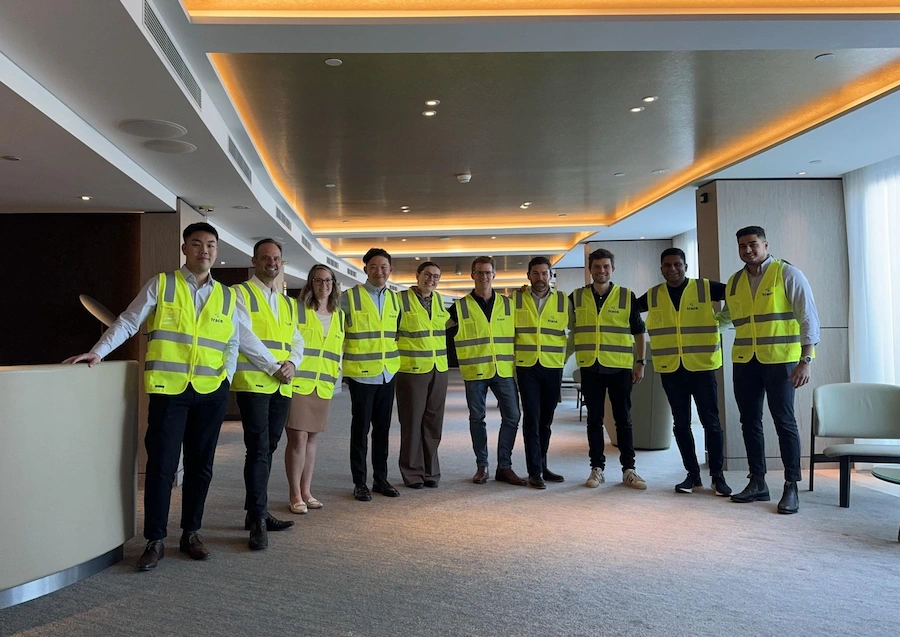Ready to turn insight into action?
We help organisations transform ideas into measurable results with strategies that work in the real world. Let’s talk about how we can solve your most complex supply chain challenges.

The Growing Importance of Scope 3 Emissions in ANZ
As the global conversation around climate change intensifies, organisations in Australia and New Zealand (ANZ) are increasingly recognising the need to address their carbon footprints. While much attention has traditionally been given to direct emissions (Scope 1) and indirect emissions from purchased energy (Scope 2), there is a growing focus on Scope 3 emissions, which encompass all other indirect emissions that occur throughout the value chain.
Scope 3 emissions often represent the largest share of an organisation's carbon footprint, making them a critical area for companies aiming to meet ambitious sustainability goals. However, managing these emissions is complex and requires a comprehensive strategy that addresses various aspects of the supply chain, product lifecycle, and partnerships.
This article explores six key dimensions that ANZ organisations can focus on to develop a winning Scope 3 emissions strategy. By prioritising these areas, companies can not only reduce their environmental impact but also gain a competitive advantage in a market that increasingly values sustainability.
1. Supplier and Customer Selection: Integrating Carbon as a Key Metric
One of the foundational steps in managing Scope 3 emissions is integrating carbon considerations into the selection and engagement of suppliers and customers. For organisations in Australia and New Zealand, this means evaluating potential partners not just on cost or quality but also on their carbon footprint and commitment to sustainability.
Key Actions:
- Supplier Engagement: Collaborate with suppliers to encourage the setting of carbon reduction targets. This might involve providing incentives for suppliers who demonstrate significant efforts to reduce their emissions.
- Customer Collaboration: Work closely with customers who are also prioritising sustainability to create synergies that reduce emissions across the value chain. This can include joint efforts in logistics, product design, and waste management.
By embedding carbon as a critical dimension in supplier and customer relationships, ANZ organisations can ensure that every link in their value chain contributes to their overall sustainability goals.
2. Product Specifications and Solutions: Driving Innovation for Low-Carbon Products
Another crucial dimension of a successful Scope 3 strategy is the reassessment of product specifications and solutions. This involves challenging traditional product designs and material choices to minimise the use of virgin resources and reduce lifecycle emissions.
Key Actions:
- Revisiting Product Formulations: Evaluate and challenge historical product formulations to identify opportunities for reducing material thickness, substituting high-carbon materials, and exploring alternative solutions.
- Developing Low-Carbon Products: Innovate by designing new products with significantly lower lifecycle emissions. This can include using recycled materials, increasing product durability, and designing for end-of-life recyclability.
For organisations in Australia and New Zealand, product innovation not only helps reduce Scope 3 emissions but also positions the company as a leader in sustainability, which is increasingly valued by consumers and investors alike.
3. Partnerships: Collaborating for Decarbonisation
Effective partnerships across the value chain are essential for achieving significant reductions in Scope 3 emissions. By working with other organisations, particularly in sectors that are critical to the supply chain, ANZ companies can drive decarbonisation efforts more effectively.
Key Actions:
- Targeted Partnerships: Establish partnerships with suppliers, customers, and even competitors to co-develop low-carbon product lines. This collaboration can include joint investments in research and development (R&D) and technology aimed at reducing emissions.
- Investing in Innovation: Pool resources with partners to invest in cutting-edge technologies and processes that reduce carbon emissions. This could involve exploring renewable energy options, improving energy efficiency, or developing new materials with lower carbon footprints.
In the ANZ context, where industries like agriculture, mining, and manufacturing play a significant role, such partnerships can be particularly impactful in driving large-scale sustainability initiatives.
4. End-of-Life Solutions: Embracing Circular Economy Principles
A comprehensive Scope 3 emissions strategy must also consider the end-of-life phase of products. By embracing circular economy principles, ANZ organisations can reduce emissions associated with waste and the disposal of products.
Key Actions:
- Recycling and Circular Solutions: Develop and promote recycling programs that allow products to be reused or repurposed at the end of their life. This reduces the need for new raw materials and cuts down on emissions from waste management processes.
- Securing Recycled Materials: Work with suppliers to secure a steady supply of recycled or low-carbon raw materials for use in new products. This not only reduces emissions but also helps mitigate the environmental impact of resource extraction.
Implementing end-of-life solutions is particularly relevant in Australia and New Zealand, where the disposal of waste in remote areas can have significant environmental impacts. By focusing on circular economy practices, companies can turn potential waste into a valuable resource.
5. Green-Portfolio Strategies: Building New Sustainable Business Segments
As part of a Scope 3 emissions strategy, ANZ organisations should consider expanding or creating new business segments focused on sustainability. Green-portfolio strategies involve developing products and services that inherently reduce emissions and meet the growing demand for sustainable options.
Key Actions:
- Developing Green Businesses: Identify and invest in new business segments that align with sustainability goals. This could include renewable energy projects, sustainable agriculture practices, or eco-friendly consumer products.
- Enhancing Existing Capabilities: Leverage existing capabilities to transition traditional products and services into more sustainable offerings. For example, a manufacturing company might shift from producing high-carbon products to those with a lower environmental impact.
For companies in Australia and New Zealand, green-portfolio strategies can provide a competitive edge in markets increasingly driven by environmental consciousness. Moreover, these strategies align with national goals to reduce carbon emissions and promote sustainable development.
6. Value Chain Integration: Enhancing Control Over Emissions
Finally, a successful Scope 3 emissions strategy involves integrating more deeply into the value chain to gain better control over emissions. For ANZ organisations, this could mean expanding operations upstream or downstream to manage the environmental impact more effectively.
Key Actions:
- Upstream Integration: Consider integrating operations with suppliers to ensure that raw materials and components are sourced sustainably. This might involve acquiring or partnering with suppliers who meet strict environmental standards.
- Downstream Integration: Expand into areas of the value chain closer to the consumer, such as distribution and retail, to influence how products are delivered, used, and disposed of. This can help ensure that emissions are managed effectively throughout the product lifecycle.
In the ANZ region, where industries often span vast geographic areas, deeper value chain integration can provide the necessary oversight to achieve significant reductions in Scope 3 emissions.
The Path Forward for ANZ Organisations
As the pressure to address climate change intensifies, Australian and New Zealand organisations must prioritise the development of robust Scope 3 emissions strategies. By focusing on these six key dimensions—supplier and customer selection, product specifications and solutions, partnerships, end-of-life solutions, green-portfolio strategies, and value chain integration—companies can not only reduce their carbon footprints but also drive sustainable growth.
Implementing a successful Scope 3 emissions strategy requires a commitment to innovation, collaboration, and continuous improvement. For ANZ organisations, the journey towards sustainability is not just a regulatory or ethical obligation but a strategic opportunity to lead in a rapidly evolving market. By taking bold actions across these six dimensions, companies can position themselves at the forefront of the global transition to a low-carbon economy.
The time to act is now. With the right strategies in place, Australian and New Zealand organisations can make a significant impact on reducing global emissions, securing their long-term success in a sustainable future.
Contact us today, trace. your supply chain and procurement consulting partner.
Ready to turn insight into action?
We help organisations transform ideas into measurable results with strategies that work in the real world. Let’s talk about how we can solve your most complex supply chain challenges.









